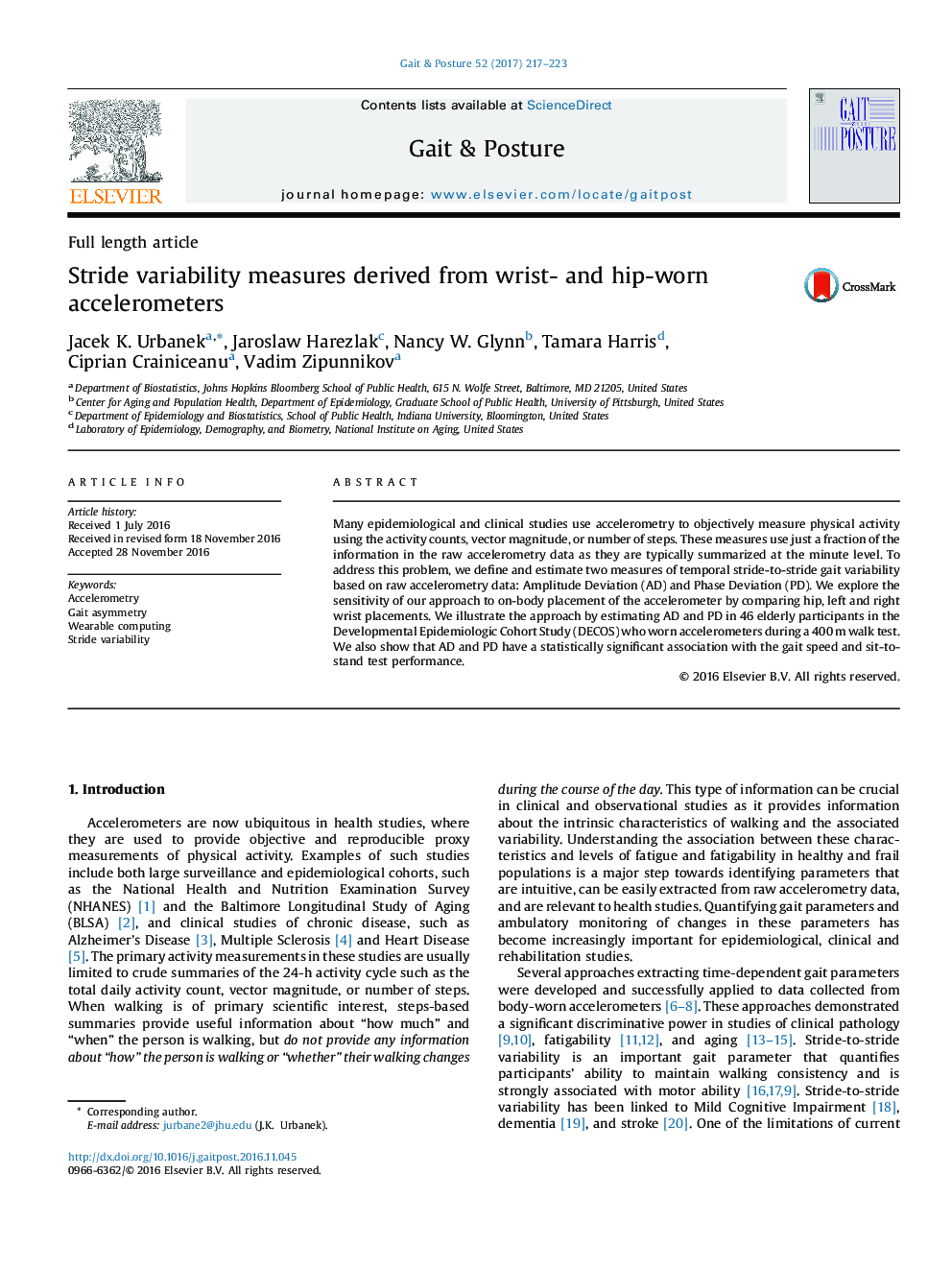| Article ID | Journal | Published Year | Pages | File Type |
|---|---|---|---|---|
| 5707548 | Gait & Posture | 2017 | 7 Pages |
Abstract
Many epidemiological and clinical studies use accelerometry to objectively measure physical activity using the activity counts, vector magnitude, or number of steps. These measures use just a fraction of the information in the raw accelerometry data as they are typically summarized at the minute level. To address this problem, we define and estimate two measures of temporal stride-to-stride gait variability based on raw accelerometry data: Amplitude Deviation (AD) and Phase Deviation (PD). We explore the sensitivity of our approach to on-body placement of the accelerometer by comparing hip, left and right wrist placements. We illustrate the approach by estimating AD and PD in 46 elderly participants in the Developmental Epidemiologic Cohort Study (DECOS) who worn accelerometers during a 400Â m walk test. We also show that AD and PD have a statistically significant association with the gait speed and sit-to-stand test performance.
Related Topics
Health Sciences
Medicine and Dentistry
Orthopedics, Sports Medicine and Rehabilitation
Authors
Jacek K. Urbanek, Jaroslaw Harezlak, Nancy W. Glynn, Tamara Harris, Ciprian Crainiceanu, Vadim Zipunnikov,
